Differences between coffee treated with Costa Rica yellow-red and black honey and coffee beans treated with Costa Rican honey
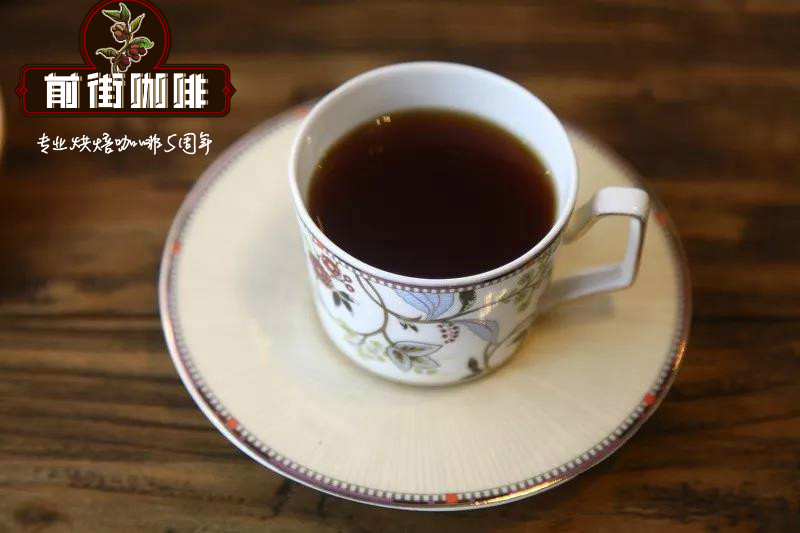
Professional coffee knowledge exchange more coffee bean information please follow the coffee workshop (Wechat official account cafe_style)
Coffee beans treated with Costa Rican honey
Costa Rican coffee yellow honey, red honey, black honey treatment, where is the difference?
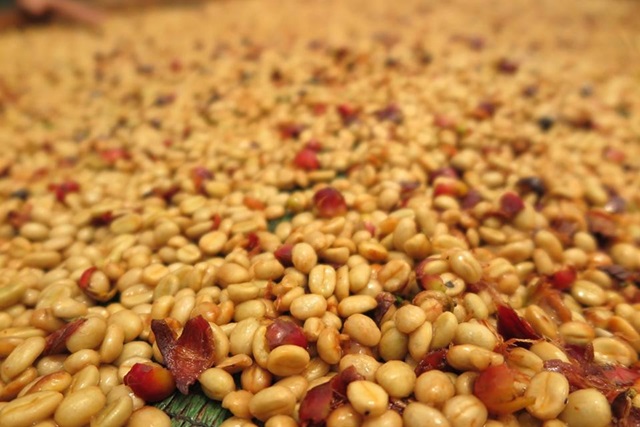
When you buy Costa Rican honey treated coffee beans, you usually have yellow honey, red honey, black honey these choices, you may have heard how many percentage of pectin layer retained by these honey treatments, and what does this mean?
Coffee farmers will sort coffee, some will retain less pectin layer, which allows faster exposure, others will retain more pectin layer, which requires longer exposure. Yellow honey (approximately 25% pectin layer retained) must be carried out in an environment with minimal shade (clouds, shade trees) to achieve a yellow appearance in order to complete the process faster. Red honey (which retains about 50% of the pectin layer) takes longer and requires some shade to expose. Black honey (retaining approximately 100% of the pectin layer) is usually covered to prolong exposure.
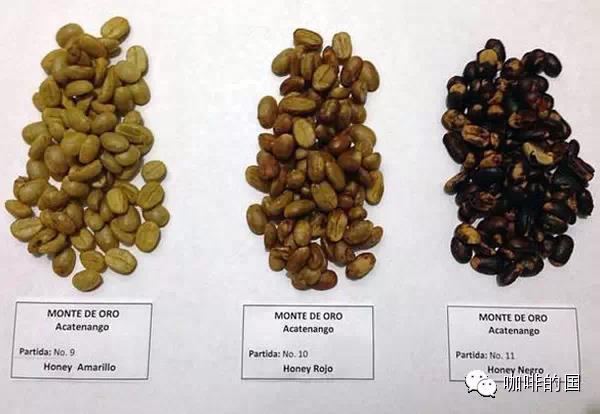
Costa Rican honey processing coffee beans in yellow honey-red honey-black honey which is good?
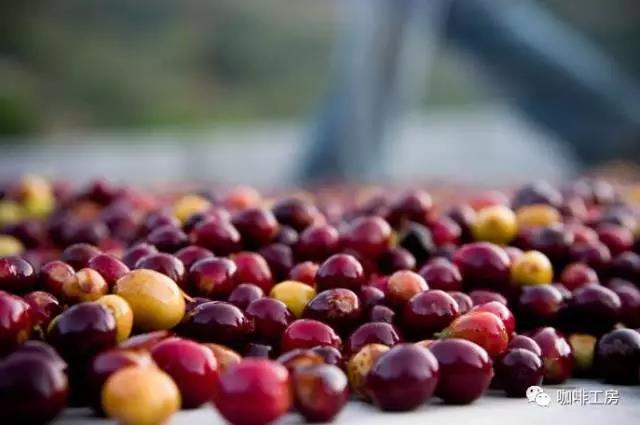
It may be that black honey is better, the flavor of honey treatment will bring more fine and deep influence because of the residual sugar in pectin layer, and the more residual pectin layer, the stronger the flavor.
However, for coffee producers, they have to face another commercial consideration. Although the benefit of black honey treatment is that better quality and better price coffee can be produced, the risk and cost will also be greatly increased. So that it may affect the willingness of farmers to use black honey treatment. The longer the coffee is exposed to the sun, the more likely it is to breed bacteria during fermentation, resulting in defective moldy beans. The beans need to be flipped more frequently and take up more exposure space, up to twice as much as yellow honey treatment. Not only to make high-quality coffee, but also to let coffee farmers produce the most profitable coffee.
Tarasu producing area
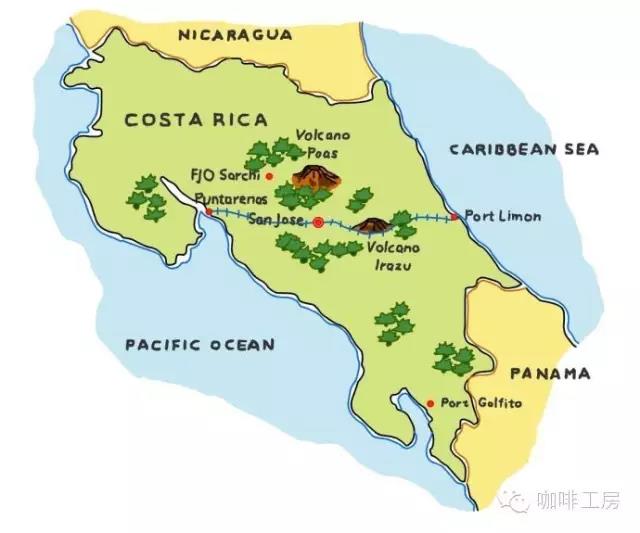
Tarrazu, Costa Rica, is one of the world's leading coffee producers, producing coffee with a light, pure flavor and pleasant aroma. Costa Rica's volcanic soils are fertile and well drained, making it the first country in Central America to grow coffee and bananas for commercial value. Coffee and bananas are the country's main exports. Coffee was introduced to Costa Rica from Cuba in 1729, and today its coffee industry is one of the most organized in the world, producing up to 1700 kilograms per hectare. Costa Rica has a population of 3.5 million, but coffee trees number 400 million, and coffee exports account for 25% of the country's total exports. Costa Rica also benefits from the Turrialba of the Central American Agricultural Research Institute (IAAC), an important international research centre, based in Tarazu.
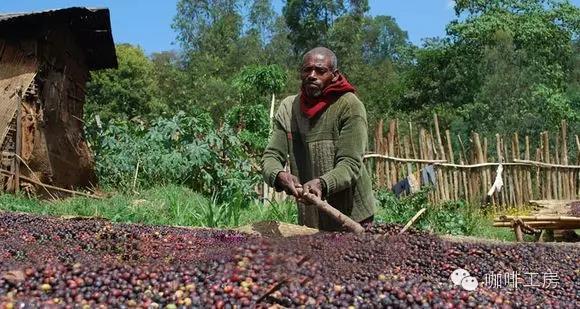
High-quality Costa Rican coffee is called "extra hard beans". This kind of coffee can grow above 1500 meters above sea level. Altitude has always been a problem for coffee growers. The higher the altitude, the better the coffee beans, not only because the higher altitude can increase the acidity of the coffee beans and thus increase the flavor, but also because the night temperature at the higher altitude is lower, which can make the trees grow slowly, thus making the coffee beans have a stronger flavor. In addition, due to the high altitude drop caused by sufficient rainfall, is also very beneficial to the growth of coffee trees. However, while there are many advantages to growing coffee at higher elevations, the resulting additional transport costs must be taken into account, which is likely to make coffee production unprofitable. The coffee industry in Costa Rica has adopted new technologies to increase efficiency, including the use of "electric eyes" to select beans and identify coffee beans of irregular size.
Located in the south of the country's capital, San Jos é, Tarasu is one of the most valued coffee growers in the country. La Minita Tarrazu coffee is a famous local product, but its production is limited, about 72600 kilograms a year. It is grown on a piece of land called La Minita, which is owned by the last three generations of the McAlpine family in the UK. In fact, this land can produce more than 450 tons of coffee a year. But Tarasu Latin America coffee is grown without artificial fertilizers or insecticides, and its harvesting and selection are done by hand, in order to avoid some damage to coffee beans caused by air spray selection.
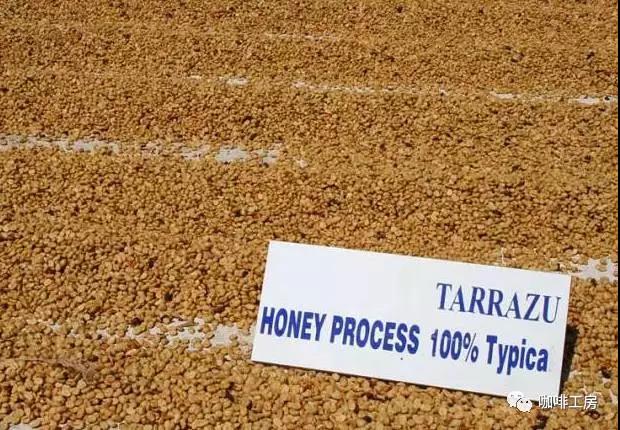
Other coffees worth mentioning are Juan Vinas,PR, H.Tournon, Windmill,SHB, Monte bello and Ssnta Rosa. Fine coffee is generally grown in Geredia and the central canyon. Another striking type of coffee is Sarchi (one of the five towns that represent Costa Rica's Coffee Road), which grows on the slopes of the Poas Volcano volcano, 53km from San Jose. Saatchi, founded in 1949, has a land area of 30770 hectares and grows sugar cane and coffee. The area is also famous for its handicrafts, attracting tourists from all over the world.
The country's coffee industry, originally controlled by the Costa Rican coffee industry company Instituto del Caf é de Costa Rica (ICAFE), has been taken over by the official Coffee Committee (Oficina del Caf é). Among the exported coffee, those products that are considered to be of substandard quality are colored with blue vegetable dyes and then transferred back to China for sale. Coffee consumed domestically (dyed blue or undyed) accounts for about 10% of total production, and local per capita coffee consumption is twice that of Italy or the United States.
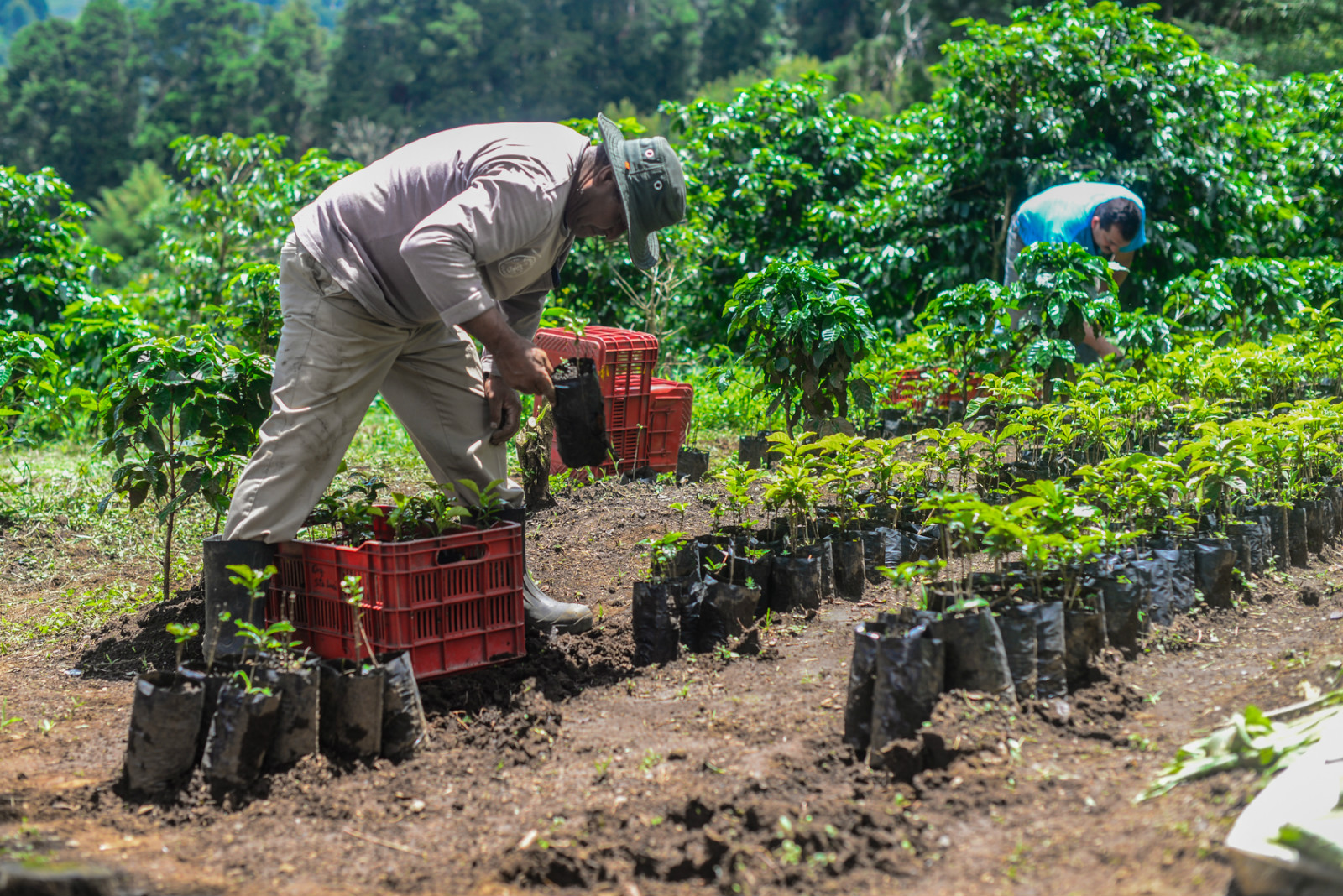
The coffee produced by Tarasu has a light and pure flavor, with bright acidity and citrus or berry-like aroma, and the coffee produced in this region has a high rating in the international coffee market. In Tarazu, there is a glutton bean, La Minita Tarrazu, which is extremely hard to find. Its coffee production is limited, about 72600 kilograms (160000 pounds) a year. It is grown on a piece of land called La Minita, which belongs to the last three generations of the British Mike-McAlpine family. The main reason why it is so popular is that Tara Zurameta does not use artificial fertilizers or pesticides. Its harvesting and selection are also done separately by hand (the reason for this: the damage to coffee beans caused by air spray selection can be avoided to some extent).
Other coffee with good quality in Costa Rica is Juan Vinas,PR; H.Tournon; Windmill,SHB; Monte bellow; Santa Rosa; FJO FJO Sarchi Note: fine Costa Rican coffee beans are called "hard beans", and their classification criteria are as follows:
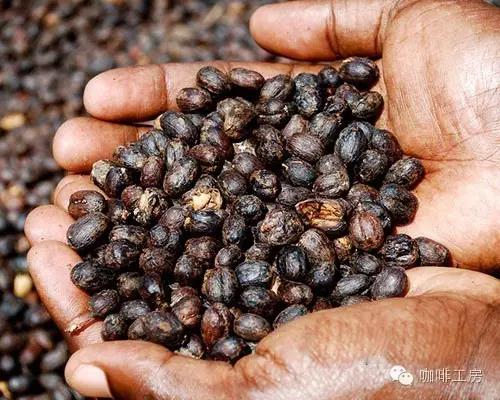
Special hard bean SHB (Strictly Hard Beans) is above 1200 meters (3900 feet) above sea level.
Good hard bean GHB (Good hard Beans) 1200m above sea level (3900 m / m)
Medium hard bean MHB (Medium Hard Beans) 1000m above sea level (3300m / 1600ft)
If you like coffee that is as light and sweet as tea, with a slightly floral, lemon and nutty flavor like melon, honey beans from Costa Rica in Central America may be to your taste. The so-called honey treatment, refers to the first use of a pulper to remove the outer skin of coffee cherry fruit, and then will take? Pectin raw beans with shells are placed on the scaffolding for sun exposure. This water-saving treatment can make the coffee taste sweeter.
Located in the fertile central valley of Costa Rica (Central Valley), the Zamora estate in San Isidro (San Isidro de Heredia) is the winner of the 2012 Costa Rican C.O.E Coffee Competition. The farm is owned by the Rodr?guez Carballo family, who have been producing coffee since 1880. This coffee has a complex taste, with floral aromas and juicy fruit flavors, and the taste is very clean.
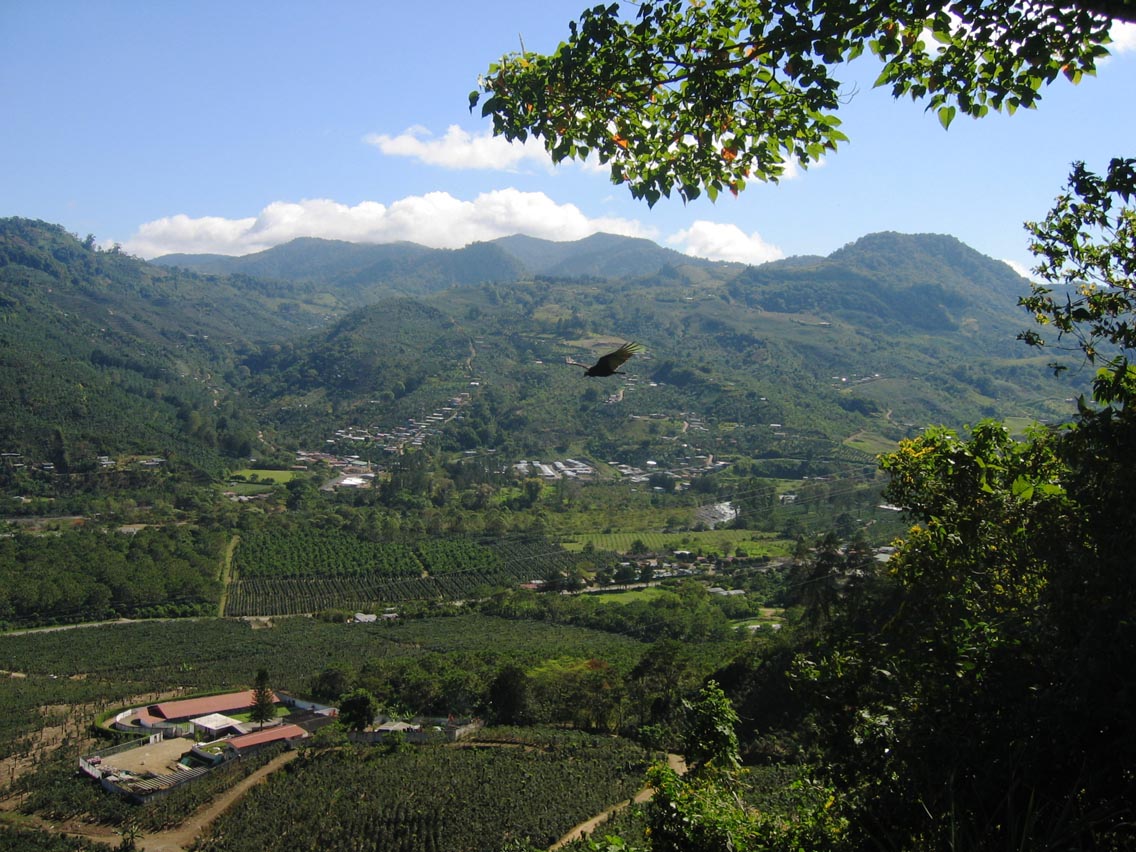
Three Wonders Manor Costa Rica Finca Tres Milagros in Costa Rica
In the boutique coffee circle, as long as it is mentioned that Camilo, the owner of the San Tuareo estate, most people agree that because of his unusual enthusiasm for coffee cultivation and innovative experimental spirit, he has become the object of many top Barista cooperation in the world over the years. In 2013, the Facusse family, which has long run Dinant Food Sale in Costa Rica, decided to take advantage of Camilo's successful experience in planting estates in Colombia to start a new manor project in Costa Rica and named it the three Wonders. The name of the three miracles comes from Camilo's belief that all successful manors absolutely have these three factors to cooperate and cooperate with each other. These three elements are coffee trees, farmers and land.
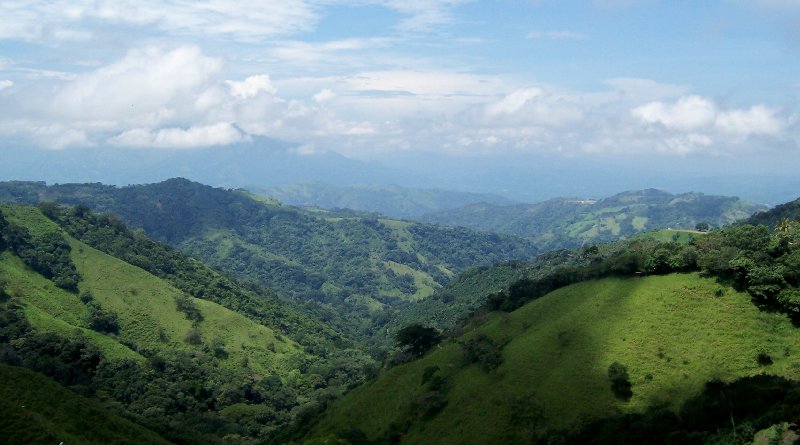
Location was the most important decisive factor in deciding to start the plan for the Costa Rican manor. after a long discussion and land evaluation process, it was finally decided to choose Tarrazu, the highest producing area in Costa Rica, where the estate is located at an altitude of 1450-1750 meters above sea level, and the soil is pozzolanic soil from the Irazu volcano, providing sufficient nutrients for coffee trees. At the same time, Camilo also requires the manor to maintain a low-density coffee planting area, which is more conducive to the absorption and growth of coffee trees, as well as a higher improvement of cup flavor. At present, the planting area of the three Wonders Manor is about 120ha, and the annual top micro-batch output is only about 300bags. In addition, the hardware of the manor is mainly planned according to four key points:
The first is to use the Green House system (Green House System) to provide better humidity, temperature and ventilation of raw coffee beans during the sun-drying phase.
The second is the environmental intercropping symbiosis system (Intercrop System), which not only provides manor ecological diversity by planting different plants, but also helps farmers to control farm ecology.
The third is shade tree planting (Shade Grown System). Most of the Inga trees are used in the manor with some other local trees, so that the growth of coffee trees is in a perfect shade environment to protect the growth of coffee trees.
The fourth is to choose the right coffee variety. At the beginning of planting on the manor, Camilo decided to adopt the traditional coffee variety with low yield but better flavor. In addition to Bourbon and Geisha, F1 is a new variety developed by the French research organization CIRAD in Costa Rica in recent years. F1 is a mixture of Villa Sarchi+Sachimor and Sudan Rume. In addition to the traditional Central American Villa Sarchi flavor, it also has the citrus flavor of the African variety Sudan Rume.
Three Wonders Bourbon Honey three Wonders Manor Bourbon Honey deals with Finca Tres Milagros Bourbon Honey
■ country: Costa Rica
■ producing area: Dota, Tarrazu
■ altitude: 1450-1750 m
■ treatment: honey treatment
■ level: SHB
■ variety: bourbon
■ flavor description: drupe, syrup, brown sugar, honey
Three Wonders F1 Honey three Wonders Manor F1 Honey treatment Finca Tres Milagros F1 Honey
■ country: Costa Rica
■ producing area: Dota, Tarrazu
■ altitude: 1450-1750 m
■ treatment: honey treatment
■ level: SHB
■ variety: F1
■ flavor description: syrup, apricot, grape, apple juice, smoky aftertaste
Raminita is a world-class manor. In the eyes of some people in the coffee industry and barista, she is a king, because last year's WBC champion, Klaus Thomsen of Denmark, used Raminita as the main recipe of espresso, and also used as the structure and flavor of creative drinks. Sure enough, some contestants adopted it in Tokyo this year.
Since the beginning of this year, the McAlpin family has used [La Minita] as the common quality control sign for all the raw beans of the group. All the raw beans exported by the group are marked on the sack car with riding seals. The following is the La Mininta and the logo that has just arrived:
The McAlpin family started running La Minita in 1967. It can be said that when discussing a boutique coffee estate, it is bound to mention "Raminita"! In the cup testing courses of SCAA and SCAE in recent years alone, lecturers mention Raminita almost every time they list taste or high-quality beans, while La Minita not only sells well in Europe for more than 50 years, but also enjoys a high reputation in the American market!
Over the years, La Minita has become famous for its seven characteristics:
Superior geographical conditions and microclimate: Tarazu is the most famous producing area in Costa Rica, but Raminita has two major rivers, the Tarrazu River and the Alumbre River converge in the mountains west of the manor, which can fully adjust the temperature, and the advantage of the west of the manor makes the farm have the advantage of not being too cold in the morning and not cooling too fast in the evening. Rainfall distribution is very good, from flowering to fruiting period, there is moderate rainfall irrigation, moisturizing, high-quality clay layer to provide adequate nutrients, an average of 4000 to 6000 feet high altitude, so that the hardness of beans is high enough!
[2] selected varieties: there are Caturra, Catuai red, Catuai yellow and Hibrido (i.e. hybird) in the manor. After cup quality test and statistical screening, Caturra and a small amount of old Hibrido are the main ones at present.
[3] strict quality control (1) under the system of rotation and tree replacement, all coffee trees are harvested for five years, that is, the trees with only 50% Michael must be cut down in the fifth year after four years of harvest to rest and wait for harvest when they grow up! There are a total of 1.5 million trees in the farm, with an average of 350000 trees being cut down every year. In addition to planting rotation, we have to change trees! Each coffee tree is harvested for only 15 years, and it is replaced 15 years later to ensure its quality. 150000 coffee trees are replaced each year and shade trees are planted around the coffee trees to plant them.
[4] the procedure of the wet treatment field is very strict and the drying machine is used after the treatment.
[5] the elimination rate of raw beans is more than 70%, that is, less than 29% of raw beans can be sold as La Minita manor beans.
[6] in the final selection stage of raw beans, it takes 30, 000 man-hours to select carefully, and only qualified ones can be marked with La Minita.
[7] use your heart! For example, Harvesting, Pruning and processing are all handled very carefully; in the harvest period, Raminita's coffee trees are harvested in five batches on average, because only the most ripe cherry fruits are picked, while batch harvesting requires a great deal of labor and patience. Pruning is rotational planting, a system that ensures that the land is not too barren and ensures that the quality of raw beans can be maintained at its peak without the use of chemical fertilizers; processing refers to the treatment of coffee fruits after harvest, and in 2001, La Minita had its own wet treatment plant, with the aim of maintaining consistent quality.
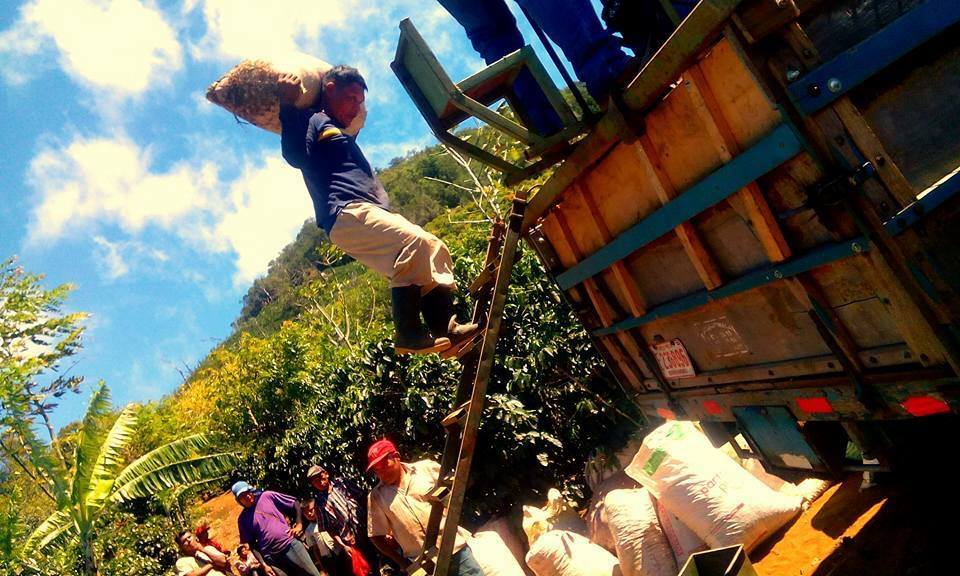
Costa Rican Shumava Estate
Costa Rica Sumava de Lourdes black honey
Costa Rica. Shumava Manor. Khadura. blackhoney
Region: West Valley
Finca Sumava de Lourdes
Breed: Cadura
Altitude: 1700 m
Treatment method: black honey treatment
Soil: Volcanic Geology
Harvest: December to March of the following year
Flavor description: Brown sugar, floral, citrus, grapefruit, sweet spices, sweet and greasy taste
Costa Rica's Shumava Estate is a very young estate; Francisco Mena, who was originally engaged in the coffee trade, bought the land and kept most of the original forest, only a small part of which was developed as a coffee growing area to maintain the natural ecological balance of the estate.
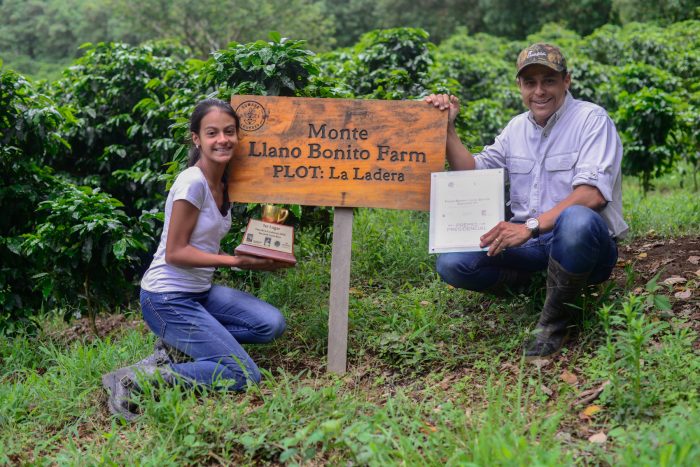
The altitude of Shumava Estate is between 1670 and 1790 meters. In another famous producing area of Costa Rica-Western Valley, high temperature difference and fertile soil are very suitable for coffee cultivation.
Manor owner Francisco Mena introduced a premium variety that entered the top 13 in the Extraordinary Cup, a Bourbon mutant variety, villa sarchi. This is a rare breed bred by crossing red bourbon trees. Strong wind resistance, likes high altitude environment, has excellent acidity and a variety of old fruit aroma, high sweetness, bright and delicate citrus acid aroma and a lower raisin and nut aroma, high complexity and balance.
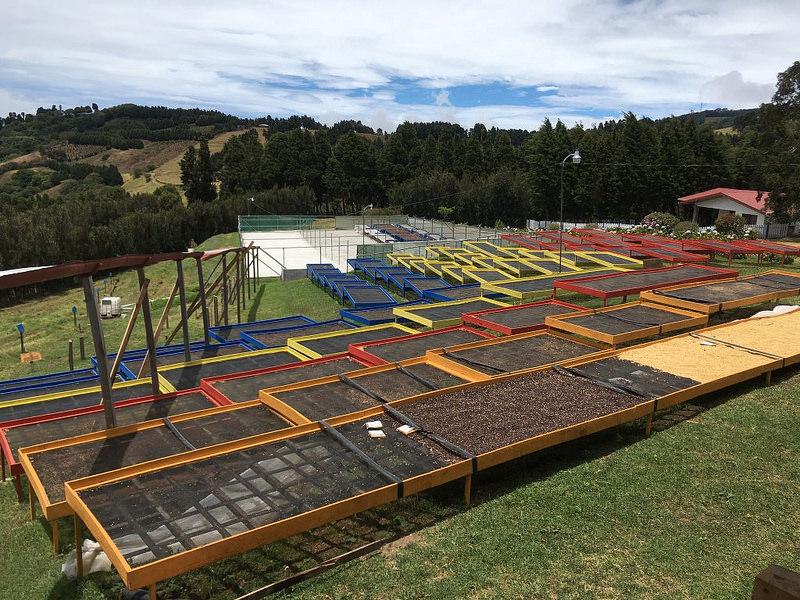
Most of the manor is left to the forest to maintain the natural environment. In the manor arrangement, also took a lot of thought, for broken wood, rotten wood, weeds and so on do not use the traditional way of burning, but the wood is broken into pieces, and mixed with organic fertilizer, used as fertilizer on the farm. From the El Chayote reserve in the western valley, in the fertile volcanic soil of Po á s, facing convection and moisture in the Pacific Ocean, low temperature difference in the morning and evening and excellent micro-climate, this small area with a radius of 1 km has given birth to four champion estates! A real hero of the earth!
Raw bean analysis
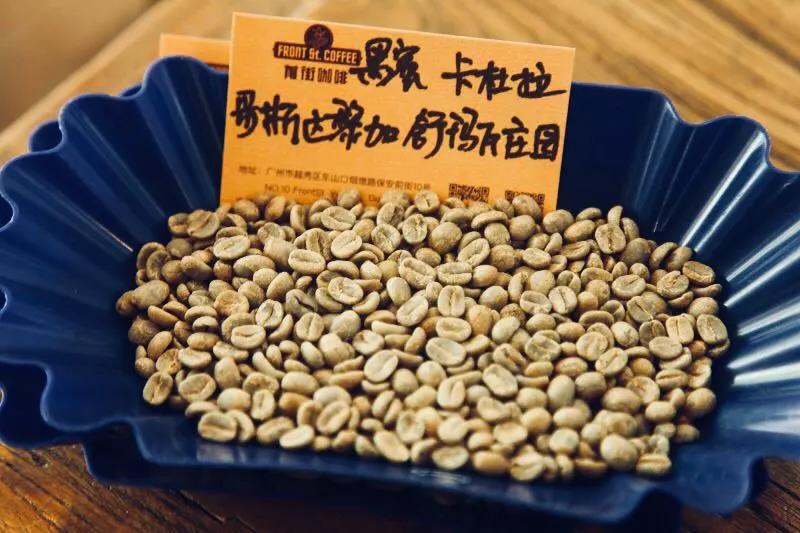
Kaddura, Katura Caturra,varietal Caturra,Coffea alabica var. Caturra .
The natural mutant of bourbon was first discovered in 1937 in the state of Sao Paulo, Brazil. At present, it is widely planted in Brazil, Colombia and other Central and South American producing areas.
Suggestion on coffee baking in Qianjie
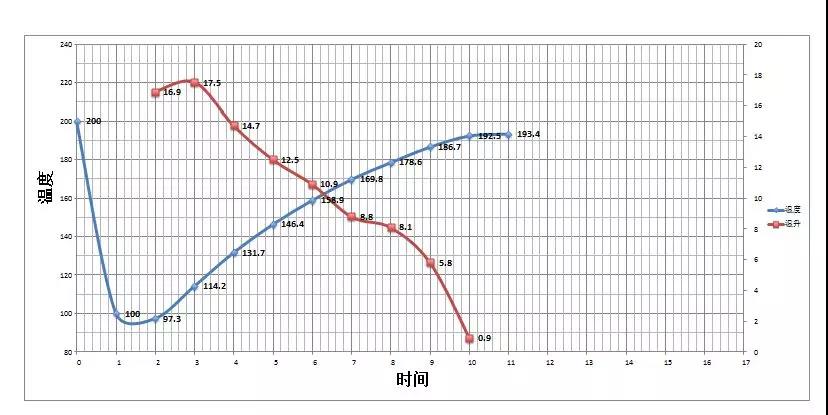
Yangjia 800N, raw bean 550g, specific operation:
The furnace temperature is 200 degrees Celsius into the pot, the throttle is set to stew for 1 minute, the firepower is adjusted to 160C, the throttle remains unchanged, the furnace temperature is adjusted to 160C, the temperature is reduced to 135C, the temperature is baked to 540 ", the temperature is 154.9 degrees, the bean surface turns yellow, the smell of grass disappears completely, dehydration is completed, and the throttle remains unchanged.
In the 9th minute, ugly Hu wrinkles and black markings appear on the bean table, and the smell of toast obviously changes to the smell of coffee, which can be defined as a prelude to an explosion. At this time, listen clearly to the sound of an explosion point, to 9: 21 "start an explosion, adjust the firepower to 80 degrees, and the throttle is fully open at 5 degrees. (the firepower should not be so careful that there is no cracking sound) 50 degrees, 193.4 degrees when the pot.
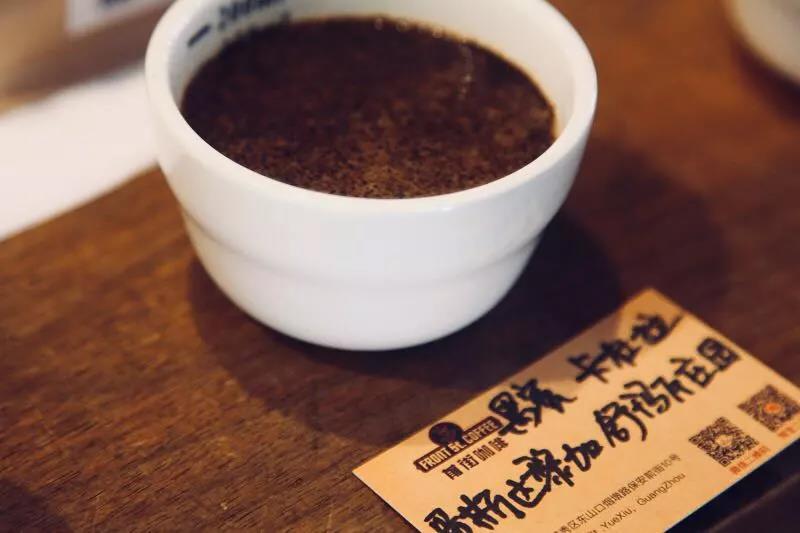
Test the flavor of Qianjie coffee cup
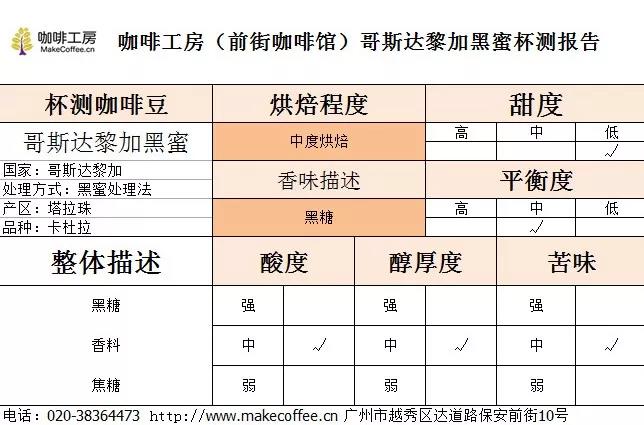
Flavor: plum, honey, brown sugar, orange blossom, white chocolate
Taste: good sweetness, soft acidity, round and full, long-lasting finish.
Qianjie coffee is recommended to be brewed.
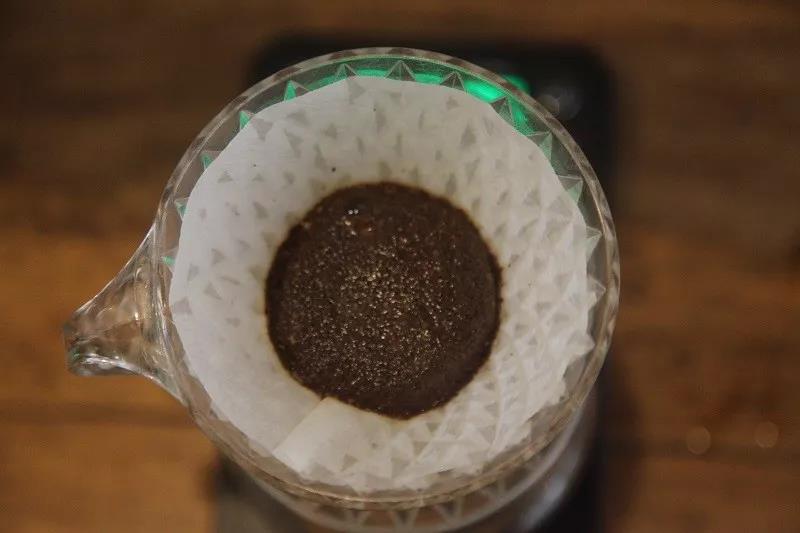
Use key home filter cup, 16 grams powder 32 grams of water steaming for 30 seconds, 89-90 degrees water temperature extraction, 1:15, fine grinding small Fuji 3.5 second water injection to 110ml cut off, wait for water drop and then slowly water injection, uniform speed, the water level should not be too high, again water injection to 233ml stop, extraction time 2:15 seconds-rich sweet sun, we can fine-tune according to their own taste.
Important Notice :
前街咖啡 FrontStreet Coffee has moved to new addredd:
FrontStreet Coffee Address: 315,Donghua East Road,GuangZhou
Tel:020 38364473
- Prev

Information on the characteristics and producing areas of coffee beans in Anjing Manor, Nicaragua
Professional barista exchanges please follow the coffee workshop (Wechat official account cafe_style) Nicaragua's self-operated coffee farm Angel Coffee Manor is located in the world coffee good area Central America Nicaragua Jinotega (1200 meters above sea level), is the first coffee farmer self-operated by Taiwanese in Central America
- Next
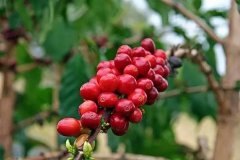
What are the characteristics of Costa Rican coffee bean honey treatment? manor variety producing area
Professional barista communication please pay attention to the coffee workshop (Wechat official account cafe_style) honey treatment why so beautiful? When honey treatment is so difficult and time-consuming, you may wonder if it's really worth it. There's no doubt it's worth it. Honey-treated coffee generally has a great balance of sweetness and acidity, and its flavor is generally not as strong as that of sun-cured coffee.
Related
- Detailed explanation of Jadeite planting Land in Panamanian Jadeite Manor introduction to the grading system of Jadeite competitive bidding, Red bid, Green bid and Rose Summer
- Story of Coffee planting in Brenka region of Costa Rica Stonehenge Manor anaerobic heavy honey treatment of flavor mouth
- What's on the barrel of Blue Mountain Coffee beans?
- Can American coffee also pull flowers? How to use hot American style to pull out a good-looking pattern?
- Can you make a cold extract with coffee beans? What is the right proportion for cold-extracted coffee formula?
- Indonesian PWN Gold Mandrine Coffee Origin Features Flavor How to Chong? Mandolin coffee is American.
- A brief introduction to the flavor characteristics of Brazilian yellow bourbon coffee beans
- What is the effect of different water quality on the flavor of cold-extracted coffee? What kind of water is best for brewing coffee?
- Why do you think of Rose Summer whenever you mention Panamanian coffee?
- Introduction to the characteristics of authentic blue mountain coffee bean producing areas? What is the CIB Coffee Authority in Jamaica?

